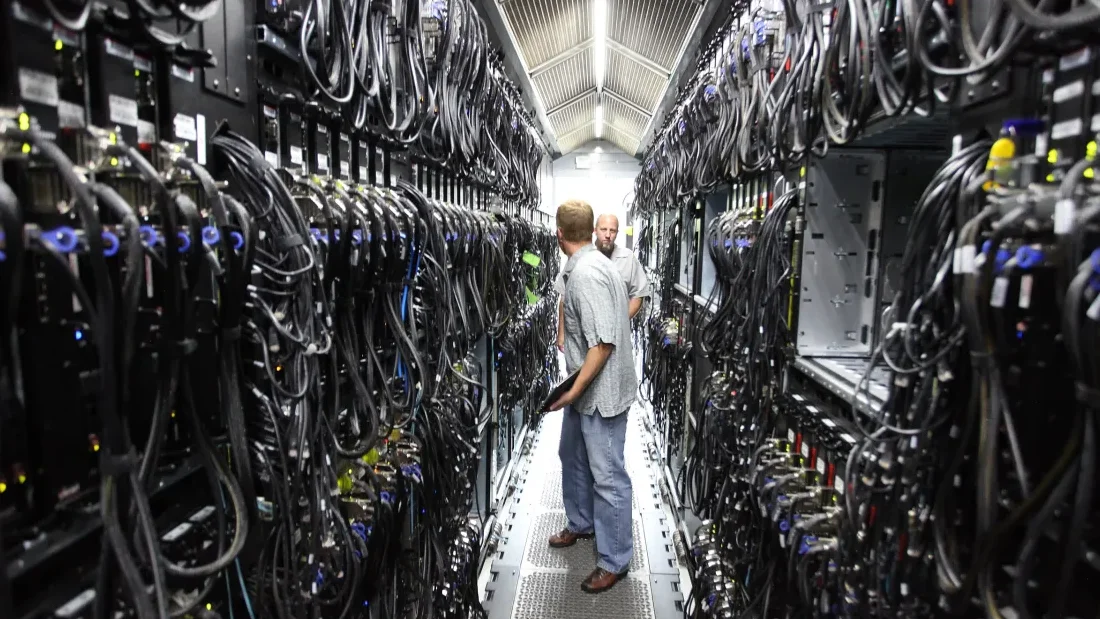
The following commentary was written by Sophie Loeb, policy analyst at the Center for Progressive Reform, and Michelle Carter, director of clean energy campaigns at the North Carolina League of Conservation Voters. See our commentary guidelines for more information.
If your energy bills seem high this very hot summer, brace yourself. Without drastic measures to curb pollution, summers will be hotter and staying cooler will be more expensive. Unfortunately, the biggest strain on our future electricity bills isn’t our air conditioning, our electric cars, or even our businesses — it’s artificial intelligence (AI).
Data centers have been consuming power all over the country since the 1960s. As the Internet has rapidly been integrated into our lives, so too have data centers. Big data’s assault on North Carolina continues unabated, creating more demand on our energy system and raising our bills.
The new wave of artificial intelligence has the power to change the very nature of our society, in many ways for the worse. Data centers running AI require a constant and consistent power supply, something the utilities in the Southeast have struggled with for decades. These centers raise our bills while providing virtually no benefits to our communities. Data centers across the nation have been given tax incentives, lower electricity rates, and have created few jobs for the amount of resources they use.
As more energy intensive industries take root, we must protect our residents from both the increases in our power needs and our monthly power bills. Unfortunately, Duke Energy’s plans to meet the growing needs of industry expose us to further financial and health risks. Duke Energy claims that their plan, which proposes the biggest methane gas build out in the nation, is needed to meet growing demand, particularly for data centers.
Duke has also warned that ratepayers’ bills will rise if they don’t build these plants, but the opposite is true. Building out solar and utility-scale battery storage instead of gas would yield $8 to $12 billion in electricity savings by 2030 and $18 to $23 billion in savings by 2050. An Environmental Defense Fund (EDF) analysis shows that, for Duke Energy Carolinas customers, increases in fuel costs account for roughly 67 percent of rate increases since 2017. The research is clear: more dirty methane gas means higher energy bills, both now and in the future.
According to Goldman Sachs, data centers will require a $50 billion expansion in electricity generation infrastructure to meet the industry’s demand. This money to build big power plants will come directly from North Carolina consumers like you and me without proper protections from the state.
Why should residential customers, particularly those who struggle to pay their energy bills, pay for these costly plants? Who really benefits from the environmental, social, and economic burdens of artificial intelligence?
Unfortunately, protections from the pressures of data centers are nowhere to be found — for now. Duke Energy has undertaken deals with Microsoft, Google, and other major power consumers to expand renewable generation and protect our grid. Through these agreements, large customers can transition to clean energy while lessening the burden of their power demands on the rest of Duke’s consumer base.
Data centers must be subject to these same agreements — and more — to keep North Carolina ratepayers safe from massive price increases. Consumers deserve transparency and accountability with any new data center project in our state.
In lieu of data centers, North Carolina should invest in good, clean energy manufacturing jobs that promote economic development, resilience, and environmental sustainability. Already, the Inflation Reduction Act is slated to create almost 40,000 jobs by 2030. Tech companies could support these efforts with electric vehicle manufacturing plants, solar panel and battery storage manufacturing facilities, and further build the Southeast as a hub of clean energy manufacturing.
To better center people over tech companies and promote an affordable energy transition:
As temperatures get hotter, there is no doubt our energy bills will go up. However, we must do everything we can to prevent massive projects from raising our bills even more. Investing in energy-draining artificial intelligence data centers not only increases electric rates for everyone, it takes away valuable jobs for rural communities. It’s time to invest in people over profits in North Carolina!

GRID: Minnesota regulators approve key permits for a utility’s $940 million plan to upgrade and boost the capacity of a 465-mile transmission line, allowing it to carry more wind energy from North Dakota and help meet clean energy targets. (Star Tribune)
ALSO:
PIPELINES: Minnesota regulators conclude that a small portion of the Summit carbon pipeline in the state’s northwestern corner would have a net benefit on greenhouse gas emissions. (North Dakota Monitor)
TRANSPORTATION: Owners of the nation’s last coal-fired steamship, which runs between Michigan and Wisconsin, examine potential carbon-free ways to power the vessel. (Bridge)
UTILITIES: Michigan’s attorney general says DTE Energy’s $456.4 million electric rate increase, which the utility says prioritizes grid infrastructure, is “excessive and unnecessary.” (Michigan Advance)
CLEAN ENERGY:
POLITICS:
EFFICIENCY: Homebuilders threaten to move their work to Kansas City’s suburbs as city officials consider stricter building codes for energy efficiency. (Kansas City Business Journal, subscription)
COMMENTARY: An Ohio building trades official says U.S. Sen. Sherrod Brown has backed key federal legislation that led to large clean energy manufacturing investments in the state. (Columbus Dispatch)
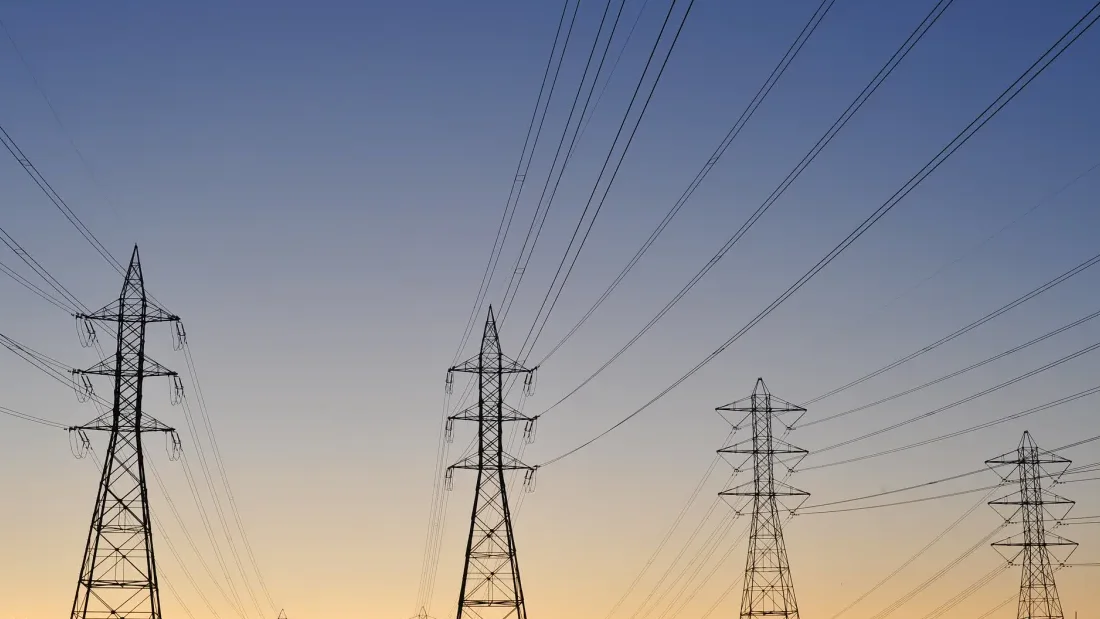
TRANSMISSION: The U.S. Energy Department awards eight projects in six Western states $92.9 million to fund initiatives aimed at “uplifting communities impacted by transmission development.” (news release, RTO Insider, subscription)
ALSO: Western state utility regulators support a new federal rule giving states a larger role in transmission planning, saying it will lower energy costs. (Utility Dive)
OIL & GAS:
UTILITIES:
POLLUTION: Satellites detect high concentrations of nitrogen dioxide pollutants around e-commerce distribution hubs and warehouses in southern California. (New York Times)
ELECTRIFICATION: Washington state officials certify a November ballot initiative seeking to overturn rules aimed at phasing out natural gas and encouraging electrification in buildings. (Washington State Standard)
SOLAR:
BATTERIES: A developer brings a 147 MW battery energy storage system online at a solar facility in southern California. (Solar Quarter)
ELECTRIC VEHICLES: A southern California police department adds a Tesla Cybertruck to its fleet as a community outreach tool, not a patrol car. (Los Angeles Times)
HYDROGEN: A California company’s hydrogen-electric aircraft successfully completes a 523-mile flight. (Mercury News)
COAL: The Colstrip coal plant in Montana urges a federal appeals court to block the U.S. EPA’s new emissions standards, citing the U.S. Supreme Court’s recent decision overturning the Chevron deference. (Montana Free Press)
CLIMATE:
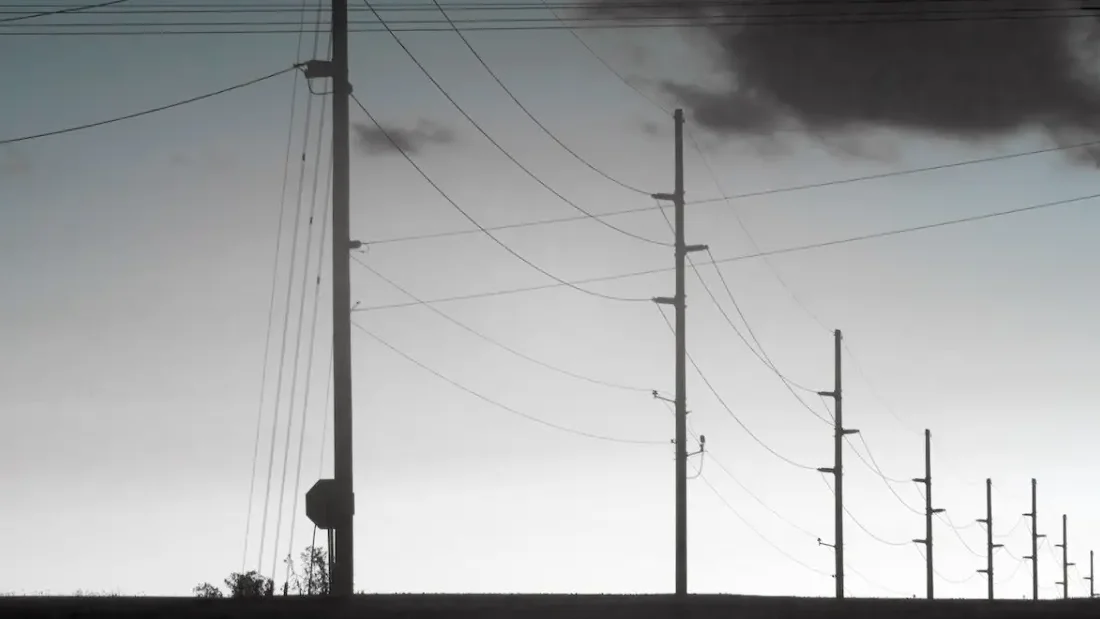
GRID: A new academic paper warns the U.S. won’t be able to decarbonize the grid by 2050 if federal regulators don’t adopt significant grid reforms and implement a national transmission strategy. (Utility Dive)
ALSO:
POLITICS: Donald Trump’s vice presidential pick, Ohio Sen. J.D. Vance, acknowledged climate change and the need for a clean energy transition as recently as 2020, but has since become publicly skeptical of renewables and turned to boosting fossil fuels. (New York Times, E&E News)
ELECTRIC VEHICLES: Electric vehicle sales grew 11% in the second quarter compared to a year earlier, exceeding expectations and suggesting predictions of an industry decline were premature. (Forbes)
OIL & GAS: The U.S. oil industry is booming, benefitting from cost-cutting and automation to produce record levels of crude from west Texas shale, generate more cash for shareholders, and disconcert clean energy advocates. (New York Times)
HYDROGEN:
CLEAN ENERGY: Michigan has added nearly 21,500 clean energy jobs over the past two years, serving as a national leader in clean energy development after adopting several supportive policies, according to a new report. (Michigan Advance)
SOLAR: The U.S. solar industry’s leading trade group issues standards for companies to follow to ensure ethical sales practices as state attorneys general claim companies use deceptive sales tactics to draw business. (E&E News, subscription)
CLIMATE: Unlike heating mandates, very few regulations exist that require landlords to provide air conditioning to renters, an increasingly dangerous public health problem as heat waves become more frequent and longer. (Vox)
COMMENTARY: A journalist and an advocate argue that only phasing out fossil fuels will slash Permian Basin methane emissions, and that new pollution-detecting satellites and inadequate regulations will fall short. (Scientific American)

Minnesota solar developers frustrated with the process of connecting projects to the electric grid will soon have a new place to turn to answer questions and resolve disputes.
State lawmakers recently passed legislation calling on the state Public Utilities Commission to hire an interconnection ombudsperson to provide clean energy companies with information, guidance, and mediation on connecting projects of 10 megawatts and less to the grid.
The legislation follows years of complaints by solar companies about disputes with utilities, Xcel Energy in particular, that have contributed to years-long delays for some projects to connect.
“We hope that we can create a role dedicated to understanding the entire interconnection process and help manage those disagreements when they arise,” said Logan O’Grady, executive director of the Minnesota Solar Energy Industries Association.
The legislation says the ombudsperson will track disputes and serve as a mediator between customers and investor-owned utilities. They will be expected to review policies, convene stakeholder groups, and assess ways to reduce conflicts.
O’Grady said customers, installers, and developers could contact the ombudsperson for assistance on issues involving rooftop, commercial, or community solar projects.
The ombudsperson would not eliminate the state’s existing dispute process for interconnection issues, which can take over a month and require mediation if unresolved issues remain.
O’Grady said he hopes having an interconnection ombudsperson will more efficiently resolve some disputes and provide a new option for developers that haven’t wanted to deal with the time and attention required to file a formal complaint.
Solar developers’ complaints have varied, but some involve inaccurate information leading to “weeks of back and forth to get clarity on a simple misunderstanding,” O’Grady said. The hope is that an ombudsperson with experience in the industry could more efficiently answer those questions or know who to contact in utilities to provide guidance.
State Rep. Patty Acomb, a suburban Democrat and chair of Climate and Energy Finance and Policy committee, said the ombudsperson’s work is less likely to draw skepticism because it comes from an independent source.
Solar company leaders support the new position. Bobby King, Minnesota program director for Solar United Neighbors, said the ombudsperson could “centralize” information, advocate for interconnection, create solutions to improve the process and avoid litigation. “I think it’s a positive step in the right direction,” King said.
Michael Allen, CEO of All Energy Solar, said the ombudsperson would provide “unbiased information” to the Commerce Department, the Public Utilities Commission, installers, and utilities. He also believes an ombudsperson could reduce the number of disputes that reach the Public Utilities Commission.
Marty Morud, CEO and owner of TruNorth Solar, said he’d had few issues with Xcel but sees an ombudsperson as a source for helping move utilities to respond if installer emails and phone calls go unanswered.
More than a dozen states already have positions similar to interconnection ombudspersons, including California, Massachusetts and New York. Sky Stanfield, a lawyer who works with the Interstate Renewable Energy Council, said states approach the ombudsperson differently, not all requiring them to have the technical skills Minnesota seeks.
She said that having someone see all the disputes and detect patterns could also help the Public Utilities Commission target rulemaking in problem areas.
“I do think having a person whose job is to stay up to date on what is happening seems to me like a positive step,” Stanfield said.
To be effective, the ombudsperson must be “empowered” by the Public Utilities Commission and accepted as an objective mediator by utilities and clean energy developers, she said.
The Legislature created an initial $150,000 budget. The ombudsperson position, which has not been posted, is expected to be filled later this year.
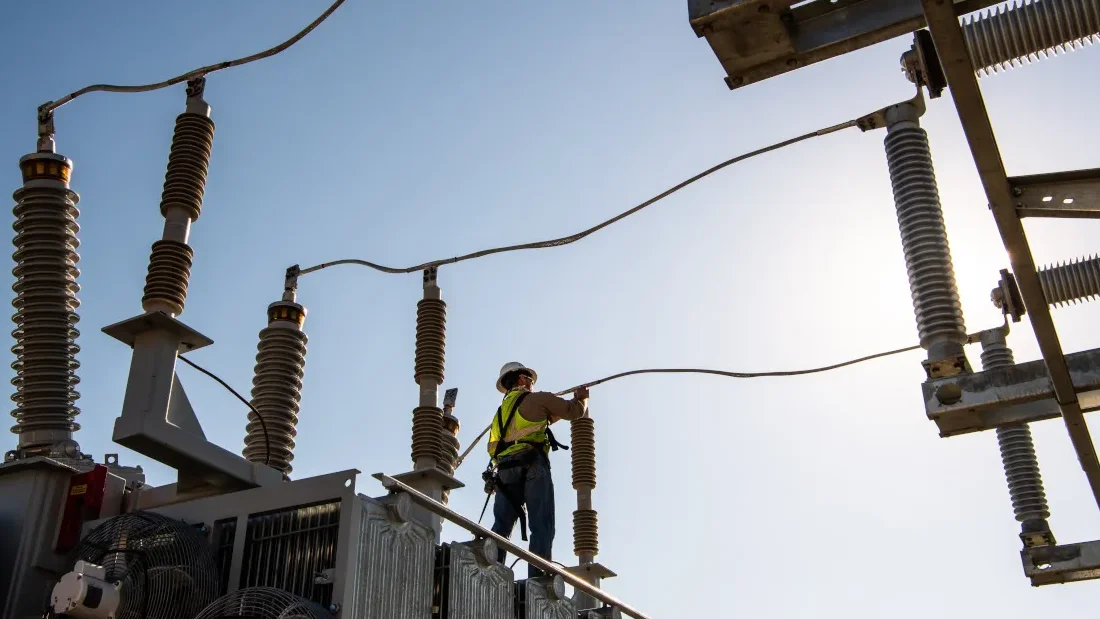
GRID: Grid operator MISO says it could face a capacity shortfall starting next summer in its northern and central regions without swift efforts to add new generation or delay retirements. (Utility Dive)
OHIO: Lt. Gov. Jon Husted allegedly helped lead the charge with now-indicted FirstEnergy executives to pass House Bill 6, which became the subject of a major bribery scheme, text messages show. (WEWS)
SOLAR:
COAL: DTE Energy completes the demolition of a southeastern Michigan coal plant where the utility plans to build a large battery storage facility. (Associated Press)
ELECTRIFICATION: Evanston, Illinois, is among U.S. communities banning gasoline-powered leaf blowers to cut down on noise and pollution, drawing pushback from the landscaping industry. (Associated Press)
CLIMATE: Researchers say climate-driven weather patterns are contributing to temporary price spikes for food and raise the risks of long-term inflation. (Washington Post)
OIL & GAS: North Dakota officials approve a $32 million loan for a processing facility that will convert natural gas into liquid hydrocarbon products. (North Dakota Monitor)
BATTERIES: A struggling Michigan battery startup enters into a strategic partnership with manufacturing giant Foxconn to help scale up production. (Crain’s Detroit, subscription)
BIOGAS: Two companies partner to develop a renewable natural gas facility at an eastern Illinois landfill that backers say will improve local air quality. (WCCU)
EMISSIONS: A large office furniture manufacturer based in western Michigan plans to cut carbon emissions 90% by 2050, which executives say gives it a competitive advantage and helps suppliers meet their own climate targets. (Crain’s Grand Rapids, subscription)
COMMENTARY:

GRID: Large tech companies are betting on atomic fusion and other unproven energy technologies to power AI data centers, which critics say are already increasing reliance on fossil fuels. (Washington Post)
ALSO:
OIL & GAS:
RENEWABLES: University of Wisconsin researchers map millions of acres of abandoned U.S. farmland that could potentially be reused for renewable energy projects. (Journal Sentinel)
SOLAR: Korean solar company Qcells expands its deal with a developer to provide 2 GW of modules from its Georgia factory for community solar projects by 2027, in what the company says is the largest community solar partnership in U.S. history. (Korea Herald, news release)
HYDROGEN: The oil and gas industry’s lawsuit against the U.S. EPA questioning the process of developing clean hydrogen as a fuel for long-haul trucks grinds against efforts by Exxon Mobil and Chevron to champion the new technology. (Houston Chronicle)
ELECTRIFICATION: A study finds California utilities could save about $20 billion over the next two decades by electrifying clusters of buildings instead of replacing their aging natural gas pipelines. (Utility Dive)
CLIMATE:
COAL: A federal watchdog’s report finds an agency’s process for distributing funding to states and tribes to clean up old coal mines is plagued by problems that have resulted in delays, poor tracking and confusion. (E&E News)

Correction: The Ohio Consumers’ Counsel is Maureen Willis. A previous version of this story misstated her name.
Last year was the eighth in a row that at least one of Ohio’s regulated electric utilities failed to meet one or both company-specific reliability standards set by the Public Utilities Commission of Ohio.
Companies providing service to a majority of Ohio ratepayers also missed one of their marks last year.
These utilities’ track records suggest consumers aren’t getting full bang for their buck, even as they’re charged millions for riders purportedly for grid improvements, vegetation management and other work.
“AEP Ohio has been investing hundreds of millions of dollars in its distribution to improve reliability,” said company spokesperson Scott Blake, commenting on the PUCO’s slightly stricter standards for the company starting in 2019, compared to those from 2013. “These investments are making stricter performance standards more achievable.”
Yet AEP Ohio failed to meet its standard last year for how long it takes to get power back on when outages affect customers.
All Ohio utilities reduced the frequency of their outages per customer last year compared to 2021 and 2022. But Duke Energy Ohio still failed to meet that standard. AEP Ohio and FirstEnergy’s Cleveland Electric Illuminating Company and Toledo Edison meanwhile failed to hit their targets for how long it takes to restore customers’ power after outages.
Prolonged outages can lead to spoiled food, loss of heating and air conditioning, interruptions to business, inability to use power for electronics and more. Those problems in turn can threaten people’s physical or financial well-being. Additionally, ongoing climate change poses continuing challenges for the electric grid’s reliability and resilience.
“Regulators of course are interested in utilities’ performance in delivering safe and reliable power,” said Matt Schilling, spokesperson for the Public Utilities Commission of Ohio.
Toward that end, the agency sets two company-specific reliability standards for each electric utility, using common metrics in the electric industry. Utilities must file reports each spring showing how they performed on each metric in the prior year.
One standard refers to the average time outages last for customers who experience them, measured in minutes. It’s called the Customer Average Interruption Duration Index, or CAIDI. The other is the average number of outages per customer systemwide. It’s known as the System Average Interruption Frequency Index, or SAIFI.
If a utility fails to meet the SAIFI metric, “it means they are having too many outages occurring,” said FirstEnergy spokesperson Lauren Siburkis. “And if they fail at meeting CAIDI, it means they are taking too long to restore [power] when there is an outage.”
The metrics allow period-to-period comparisons so a company can track its improvement over time, she added.
The PUCO’s rules exclude major outages, such as those due to some extreme weather events, in determining whether companies met or missed their regulatory reliability standards, although the annual reports include the data both before and after the exclusions. Yet the “customer minutes interrupted,” which did count toward the reliability standards, added up to more than 1,000 years of power loss for individual customers last year.
The four utilities that failed to meet one of their standards last year provide power to more than half of Ohio’s electricity customers. The Energy News Network’s data review shows at least one Ohio utility also missed meeting a standard every year going back to 2016.
In 2022, CEI and AES Ohio both missed their standards for the average duration of customer outages, and Duke missed its standard for the average frequency of outages in 2021 and 2022.
AES Ohio failed to meet its standard for the average length of customer outages for four years in a row, from 2019 through 2022, but spokesperson Mary Ann Kabel said the situation is improving.
“The company’s CAIDI has improved every year since 2019, and we’re committed to providing safe and reliable service,” she said.
Before that, in 2018, AEP missed on both of its performance standards. Duke Energy Ohio missed on both of its standards in 2017. And in 2016 Duke missed on its standard for the average time customers with outages went without power.
When companies fail to meet either of their reliability standards in the prior year, regulators require them to provide reasoning and a plan to address those issues. The Ohio Administrative Code says missing the same standard for two years in a row counts as a violation. Violations can result in penalties, corrective action, or restitution to customers.
Utilities’ ability to meet their performance standards depends on multiple factors, Schilling said. All have programs to trim vegetation within their rights-of-way, but vegetation outside that area also can interfere with power lines and equipment.
“Other factors like aging infrastructure and maintenance can cause outages,” Schilling said, although “utilities routinely invest to update and maintain their systems.”
Additional causes include damage from wildlife or motor vehicle crashes, some of which may be out of utility companies’ control.
Extreme weather played a role in Duke’s miss on the frequency standard last year. Three big storms in July 2023 bumped up the number of outages, even though the storms didn’t meet criteria for excluded events, the company’s filing said.
FirstEnergy’s action plan filed in April pointed to line and equipment failures and to trees as reasons why CEI and Toledo Edison didn’t meet their standards last year. Toledo Edison and CEI plan to conduct thermal scans of their worst performing circuits and additional work to upgrade lightning protection and other equipment in places where customers have multiple outages. Other work aims to prevent tree-related problems.
“Tree-related outages are a top contributor to outage durations because of the need to safely remove the vegetation prior to starting repair work,” Siburkis said, “so the tree-related work in the plan will have a positive impact, even during major events.”
Vegetation management was also part of AES Ohio’s work when it failed to meet its outage duration standard. The company’s action plan filed in 2023 said the company was working to install stronger poles and make other improvements “to reduce the severity of storm outages.” Smart grid deployment was also part of the company’s plan, along with a revision of its reliability standards.
AES Ohio’s updated standards took effect last year. They allow nearly seven minutes longer for restoring service to customers when they lose power, but require a slightly lower average frequency for outages. A slightly lower SAIFI standard would reflect an expectation for there to be fewer outages in the first place.
AEP Ohio blamed arithmetic for its failure to meet the outage duration standard last year. Smart grid work eliminated various shorter outages, the company reported. But a smaller number of service interruptions pushed up the average duration for outages that did occur.
“AEP Ohio’s CAIDI score has gone up not because AEP Ohio’s performance on longer outages has gotten worse, but rather because AEP Ohio has been able to eliminate shorter outages that had been keeping the CAIDI average down,” Blake said.
An additional industry metric, known as SAIDI, for System Average Interruption Duration Index, divides the number of outages by all customers, whether they lost power or not. Using that metric makes it look like AEP Ohio outperformed by more than 25%, according to data in the company’s filing.
House Bill 260, sponsored by Republicans Bill Seitz of Cincinnati and Monica Robb Blasdel of Columbiana, would swap out SAIDI for CAIDI.
Seitz initially said he didn’t know how reliability was currently calculated. Then in a follow-up email he said he had been informed a switch “would better incentivize utilities to meet the reliability demands of customers,” adding an opinion that the installation of smart meters and other work to reduce outages makes the CAIDI standard “obsolete.”
“It’s meaningless if you don’t have both” of the current standards, said Ashley Brown, a former PUCO commissioner, adding that decisions about reliability standards are best left to regulators, not the legislature.
The bill’s proposal to change the metric “diminishes the importance of individual consumer outages,” said Ohio Consumers’ Counsel Maureen Willis. “Other changes being proposed weaken the reliability standards by excluding more outages from being part of the reliability assessment,” she added.
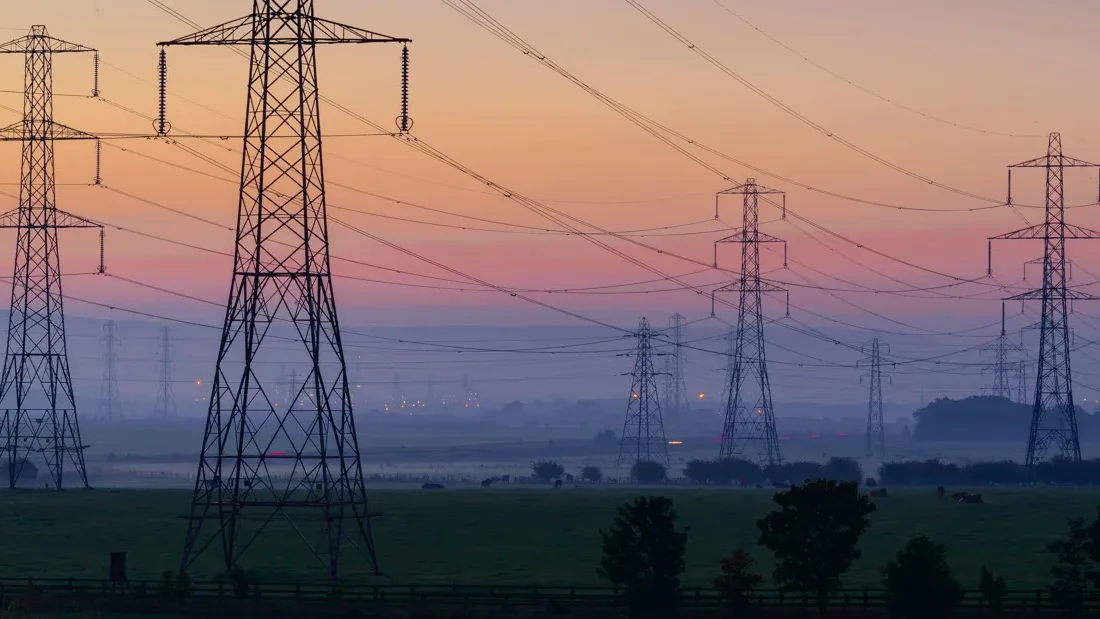
GRID: An organization pushing to build transmission lines along highways recently scored a legislative win in Minnesota, and now looks to expand the policy to other states. (Canary Media)
ALSO: Consumers Energy is burying 2 miles of overhead power lines in eastern Michigan to improve grid reliability in an area prone to outages. (WJRT)
OVERSIGHT: An Ohio bill that surfaced after the HB 6 scandal and would require consumer representation on the state’s Public Utilities Commission is up for a first hearing today. (WOSU)
CLIMATE: Climate change-related severe storms have caused losses for insurers in Minnesota for six of the last seven years, likely driving higher insurance premiums and home prices for buyers. (MPR News)
UTILITIES: Indiana consumer and environmental advocates oppose a proposed Duke Energy rate increase that they contend would further the utility’s reliance on coal and volatile fuel costs. (Herald-Times)
OIL & GAS: Residents are ordered to evacuate a 16-story Youngstown, Ohio apartment building that neighbors a building that was structurally damaged from a natural gas explosion and is at risk of collapsing. (Associated Press)
SOLAR:
TRANSPORTATION: The city of Detroit is piloting a public transportation program that will use on-demand, self-driving shuttles in portions of the city to benefit older or disabled residents. (Model D)
EFFICIENCY: Ohio awards $5.6 million in energy efficiency grants for six projects across the state that aim to cut buildings’ energy use. (Cleveland.com)
POWER PLANTS: Ameren Missouri seeks permission to build a $900 million, 800 MW natural gas-fired peaking plant that would run during periods of high demand. (Daily Energy Insider)
COMMENTARY: A GOP state representative from Michigan says new federal tailpipe emissions regulations that accommodate an influx of electric vehicles would disrupt the state’s primary industry. (Bridge)

GRID: Weather-related power outages, such as those that recently struck Texas, are happening more frequently as storms intensify and an aging electric grid struggles to keep pace with demands. (CNN)
ALSO:
CLIMATE: An analysis of death certificates finds that 2023 was a record year for heat-related deaths and illnesses, with Texas, Oklahoma, Louisiana, and Arkansas among the hotspots where rates surged. (Associated Press)
UTILITIES:
COAL: Clean energy advocates are finding success in Louisiana and elsewhere arguing that coal is more costly than renewables and that ratepayers shouldn’t have to pay for uneconomical power plants. (New York Times)
ELECTRIC VEHICLES:
EMISSIONS: Savannah, Georgia, has seen its electricity-related greenhouse gas emissions decline over the last two decades even as its population grew, but transportation emissions are rising. (Savannah Now)
OIL & GAS:
SOLAR:
STORAGE: Lynchburg, Virginia’s city council approves siting agreements for two major battery energy storage systems that include money for the fire department to buy training and equipment. (News & Advance)
POLICY: A Virginia Department of Energy official will serve as executive director of a newly revived state commission tasked with studying energy-related legislative proposals. (Virginia Mercury)
COMMENTARY: North Carolinians would pay the cost of Duke Energy’s proposed natural gas plant build-out through heightened utility bills and worsened health, air and water, an advocacy group writes. (Appalachian Voices)